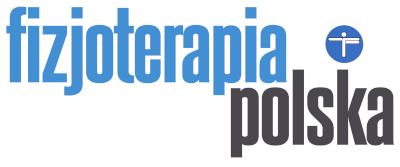The use of a Szirmal myotonometr to evaluate spastic tension in the lower limbs of children with cerebral palsy
Zbigniew Śliwiński, Bartłomiej Halat
Zbigniew Śliwiński, Bartłomiej Halat – The use of a Szirmal myotonometr to evaluate spastic tension in the lower limbs of children with cerebral palsy. Fizjoterapia Polska 2001; 1(3); 261-267
Background. The authors present the results of their research on the behavior of spastic muscle tension in the lower limbs of children with cerebral palsy. Material and method. The experiment was conducted with a group of children undergoing treatment at the Zgorzelec Rehabilitation Center. During a month-long hospitalization, an individualized rehabilitation program was developed and realized for each child. The children whose muscle tension was tested received cryostimulation in both lower limbs twice daily for 10 days of therapy. The value of the muscle tone was checked on the surface of the muscle belly of the quadriceps and biceps of the thigh and the triceps of the calf, with measurements made before cryostimulation, 10 minutes afterwards, and again 20 minutes after the conclusion of the procedure. The tests were repeated before the beginning of the rehabilitation program, after the fifth day, and after the tenth day. Muscle tension was measured using a Szirmai myotonometer. Results. A statistically significant difference occurred in the spastic tension at the level of the muscle belies of the quadriceps. There is an observable, though smaller difference in the thigh and the triceps of the calf. The trend line as an average reveals a tendency to markedly reduced spastic tension in the lower limbs after the application of the appropriate rehabilitation program. Conclusion. In the authors’ opinion, the Szirmai myotonometer is a useful tool enabling the objective evaluation of muscle tone.
| Invalid download ID. | Pobierz bezpłatnie artykuł w j. angielskim |

